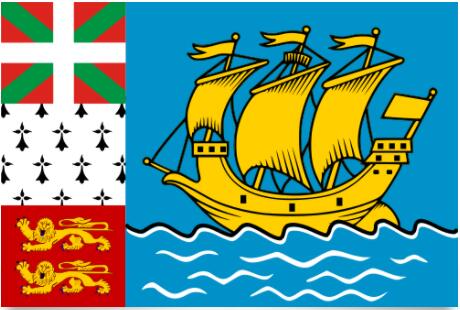Saint Pierre and Miquelon Flag and Meaning
Flag of Saint Pierre and Miquelon

Saint Pierre and Miquelon Flag Meaning
Saint-Pierre and Miquelon is a small archipelago located in northeastern North America and belongs to France.
Saint Pierre and Miquelon Overview
| Population | 6953 |
| Currency | Euro |
| Area | 242 km² |
| Capital city | St. Pierre |
| Population density | 28.9 residents/km² |
Archipelago of 2 islands off the Canadian coast of the North Atlantic: Pierre (26 km²) and Miquelon which with Langlade covers an area of 216 km². In addition, a dozen small islands. Their economy is almost totally dependent on fishing.
The People: The majority are descendants of French colonists.
Official name: Collectivité territoriale de Saint-Pierre-et-Miquelon
Religion: Catholic
Language: French
Capital: Saint-Pierre, 5,900 residents (2000).
Other important cities: Miquel, 1,100 residents (2000).
Government: French overseas territory administered by a general council of 19 elected members and a prefect appointed by the French government – since August 2006: Ives Fauqueur. The Chairman of the Territorial Council of the Islands has been Stéphane Artano since March 2006. Artano was convicted of fraud in 2009. The archipelago has 1 representative respectively. the French Senate and Chamber of Deputies and a representative of the European Parliament.













































